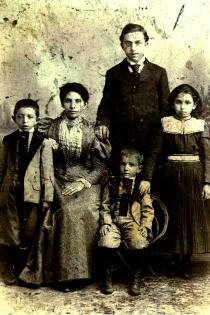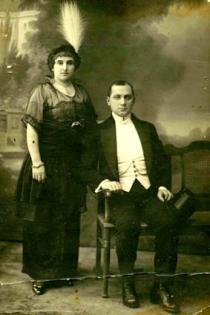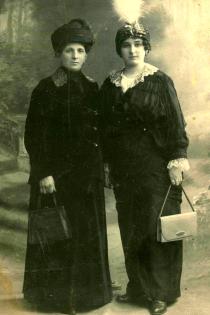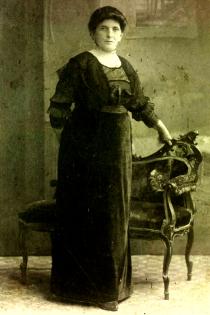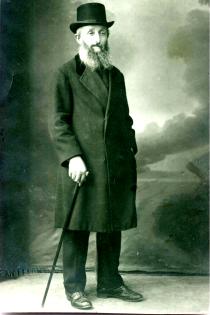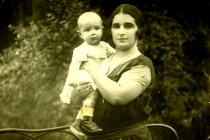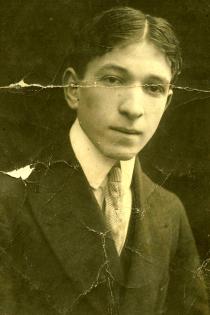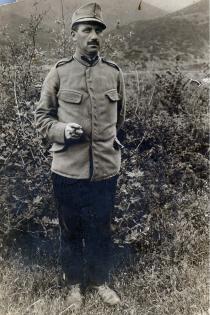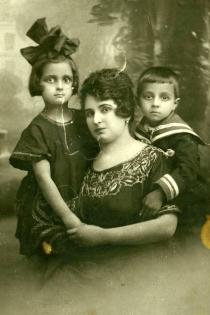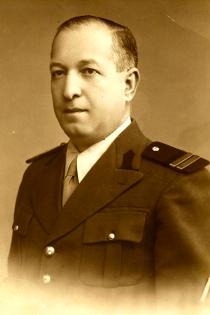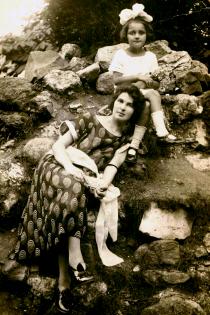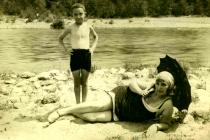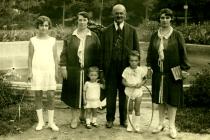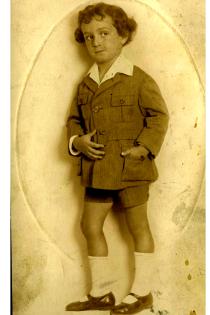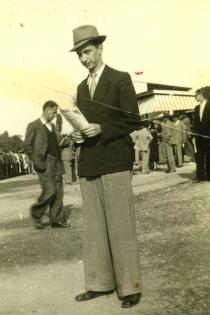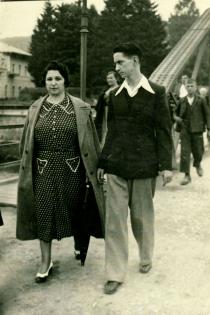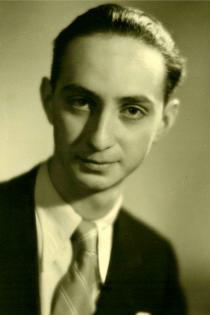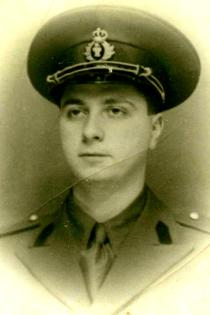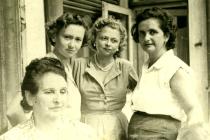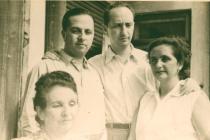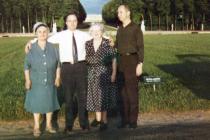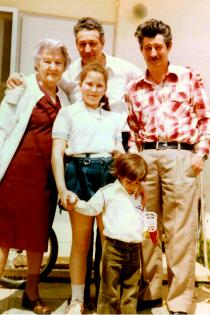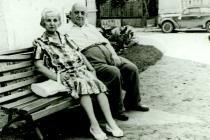The photo was taken in Bucharest, in the 1960s. From the left side this is my mother, Estera Wechsler, my brother, Sebastian Sebastien (changed from Wechsler), me, Aristide Streja (changed from Wechsler) and my sister, Stefania Rubinger ( nee Wechsler).
Estera Wechsler [nee Letzler], my mother, was born in 1888, in Ploiesti. My mother's culture was rather rich. She spoke foreign languages and she read literature in Romanian and in other languages too. She interrupted her studies and had to get married at an early age. My parents had three children: Stefania, Sebastian and me, Aristide Wechsler. My father's intention was to send us to school to get some education, but it was my mother who insisted that we go all the way from elementary school to college.
I, Aristide Streja [Ed. note: He changed his name from Wechsler to Streja after World War II.], was born in Bucharest on 19th December 1922. I was well looked after and educated by my parents. I had a sister who was 7 years older than me and a brother who was 6 years older. I fall in love and get married to Cheli Weisbuch. We have one child and a beautiful marriage. Our son was born in Bucharest. For 22 years, he have been living a decent life abroad. We have two granddaughters.
I became an architect in 1947. First I got hired by the Union of the Democratic Women in Romania. I fixed a children's hostel. I don't remember on what street it was located, but I remember it was an old house. I designed some locker room benches from oak trunks, and some oak furniture with cupboards that all bore a sign - a bird, or a rabbit, or a bear. The children had a place where they could wash, that was also a boarding school, and there were the same signs as those on the cupboards. They completed the entrance and the basement, which I had altered in order to make room for the kitchen. It had been a cellar and they had to remove a wall to create a large room. I had a metal beam installed and I hanged the ceiling on it. Then I got hired by the Construction Projects Institute, the first State project institute in the country. I got the job in 1948 or 1949. My brother was already working there. The institute changed its name a lot of times, and we got moved from one place to another. But the place stayed the same. So, for 40 years, I worked for the same project institute. Only it kept getting new names.
My very first project there was the cement factory in Turda. This was an easy job. Then I made cement factories in Medgidia and Bucharest. Later, with some former professors of mine from the Architecture Faculty, I drew the urban improvement plans for the town of Medias. Afterwards, I made hundreds of stores for the CENTROCOOP. I designed some standard projects which were used as a basis to replicate hundreds of rural stores. In Savinesti, I designed the first self-service restaurant; the equipment was provided by the Ministry of Chemistry. [The Synthetic Thread and Fiber Industrial Complex in Savinesti was under the jurisdiction of the Ministry of Chemistry.] I designed a series of projects for workers' hostels and boarding schools. In Bucharest, I made the block no.10 in Palatului Sq., on Ion Campineanu St. The building had dwelling apartments with a post office and a bank at the ground floor. I have very nice memories of that project. The building has a passage underneath. There was a street that joined Ion Campineanu St. I couldn't block it, so I made it go under the building. I had some very good engineers. This was my most important project that I saw put into practice. I also did some experimental projects for stores: a roof made of insulated metal beams covered with wavy plates of asbestos-cement. At that time, between 1960 and 1965, this was an innovation. I was involved in a study with another project institute. I designed a house heated by solar power in Campina - a place where there were more sunny days per year than the average in Romania. The ground floor was heated from an adjoining greenhouse. Solar panels were placed on the roof. They heated water that was pumped through the heaters and to the taps.
I began my career at the institute as a simple designer, and I ended up as a project manager for major assignments. It goes without saying that I went through many adventures as a project manager - I always had all sorts of adventures.

